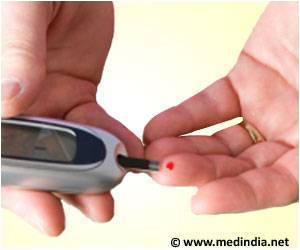
‘History of anabolic androgenic steroids (AAS) misuse leads to impaired insulin sensitivity (IS), even several years after AAS cessation.’
Tweet it Now
A cross sectional case-control study among young men (age 50 years and under) was carried out including three study groups: current AAS misuse, former AAS misuse and age-matched healthy controls who had never used AAS. All participants were engaged in recreational strength training. A 120 min oral glucose tolerance test (OGTT-a standard test for diabetes) was performed after a minimum of 8-hour overnight fasting. Plasma glucose and insulin were obtained at five time points during the OGTT: 0, 30, 60, 90 and 120 min. IS was then calculated using a formula known as the Matsuda index, with higher values indicating better insulin sensitivity. Body composition was assessed by a DEXA-scan including measurements of abdominal fat distribution, divided into visceral adipose tissue (VAT-fat around organs) and subcutaneous adipose tissue (SAT).A total of 100 participants were included: current AAS misuse, n = 37 (mean age 31.4 years) former AAS misuse, n = 33 (mean age 34.8 years, mean duration since AAS cessation 2.6 years); and healthy control participants, n = 30 (mean age 31.5 years). Participants with current AAS misuse and former AAS misuse had a clearly lower Matsuda index score reflecting impaired IS as compared with the control group (mean Matsuda score 6.49 current abuse vs. 5.09 previous abuse vs. 8.51 no abuse).
Despite this, men with current AAS abuse had the greatest lean body mass and lowest total body fat % as compared with the healthy controls and subjects with former AAS misuse (means for lean body mass 25.4 kg/m2 [current abuse] vs. 21.3 kg/m2 [former abuse] vs 21.9 kg/m2 [controls] and for body fat 14.1% [current abuse] vs. 17.3% [former abuse] vs 19.4% [controls]).
However, VAT volume was higher in the groups with current AAS and former AAS abuse than in the controls (means 388 cm3 current abuse vs 347 cm3 former abuse and 290 cm3 no abuse). Moreover, the three groups differed significantly in SAT volume, as participants with former abuse of AAS had the highest SAT volume (962 cm3) and men with current AAS misuse had lowest volume (546 cm3) vs control participants (748 cm3). Analyses showed that VAT and SAT were inversely associated with Matsuda Index score.
They add: "We have worked further on the data and found that both the higher visceral fat and impaired insulin sensitivity could be caused by reduced levels of the cardiac natriuretic peptides, which are predominantly known as key regulators of wáter and sodium stability in the cardiovascular system. Our results show these cardiac peptides are clearly suppressed by anabolic steroids and additionally that reduced levels are linked with impaired insulin sensitivity."
Advertisement















